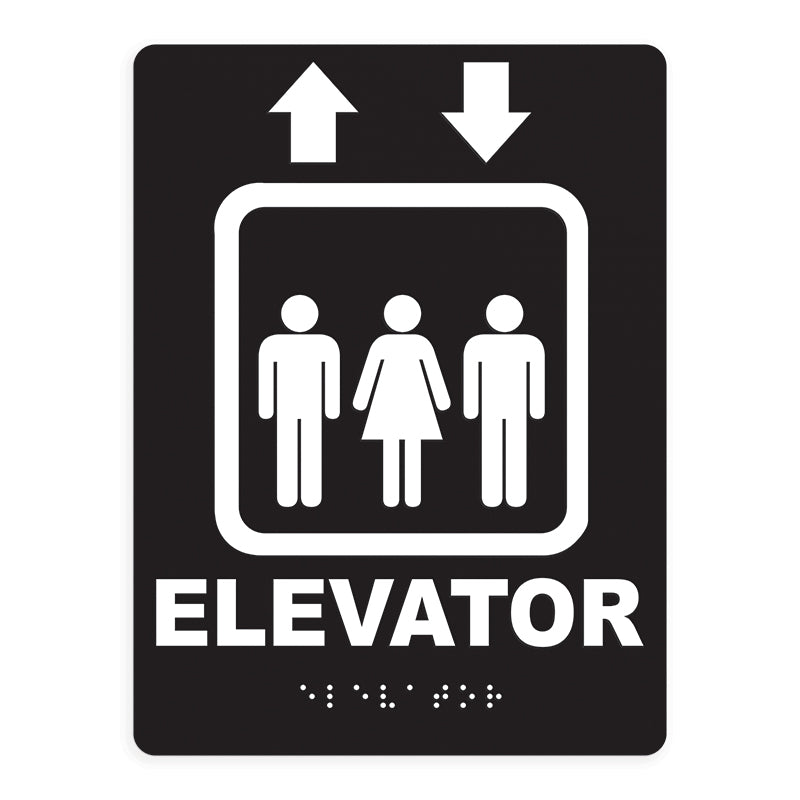The Role of ADA Signs in Following Availability Standards
The Role of ADA Signs in Following Availability Standards
Blog Article
Discovering the Trick Attributes of ADA Indications for Enhanced Access
In the world of accessibility, ADA indications offer as silent yet effective allies, guaranteeing that rooms are navigable and inclusive for individuals with specials needs. By incorporating Braille and responsive elements, these indications damage barriers for the visually damaged, while high-contrast color systems and legible font styles provide to diverse aesthetic demands.
Significance of ADA Conformity
Making certain compliance with the Americans with Disabilities Act (ADA) is critical for cultivating inclusivity and equal gain access to in public rooms and workplaces. The ADA, established in 1990, mandates that all public facilities, employers, and transport solutions suit individuals with impairments, ensuring they take pleasure in the very same rights and chances as others. Conformity with ADA standards not only satisfies legal commitments but likewise improves an organization's online reputation by showing its dedication to variety and inclusivity.
One of the essential facets of ADA conformity is the execution of obtainable signs. ADA signs are made to guarantee that individuals with disabilities can easily navigate with structures and spaces.
Furthermore, sticking to ADA regulations can minimize the threat of lawful repercussions and prospective penalties. Organizations that stop working to follow ADA standards may encounter charges or claims, which can be both monetarily burdensome and damaging to their public picture. Therefore, ADA compliance is essential to promoting a fair environment for everyone.
Braille and Tactile Elements
The unification of Braille and tactile components right into ADA signage embodies the concepts of access and inclusivity. It is normally placed below the equivalent text on signage to make sure that individuals can access the details without aesthetic help.
Responsive aspects extend past Braille and include elevated signs and personalities. These components are created to be discernible by touch, enabling individuals to recognize room numbers, restrooms, exits, and various other vital areas. The ADA establishes certain guidelines pertaining to the dimension, spacing, and positioning of these tactile elements to maximize readability and make sure uniformity across different environments.

High-Contrast Shade Plans
High-contrast color pattern play a pivotal role in improving the exposure and readability of ADA signage for people with visual impairments. These systems are necessary as they optimize the distinction in light reflectance between text and background, ensuring that indicators are conveniently discernible, even from a range. The Americans with Disabilities Act (ADA) mandates the use of details color contrasts to suit those with minimal vision, making it a critical aspect of conformity.
The effectiveness of high-contrast shades hinges on their capacity to stick out in different lighting conditions, consisting of poorly lit settings and locations with glow. Typically, dark message on a check my site light background or light text on a dark background is employed to attain ideal contrast. For instance, black text on a yellow or white background gives a plain visual distinction that helps in fast recognition and understanding.

Legible Fonts and Text Dimension
When considering the design of ADA signage, the option of clear fonts and proper message size can not be overstated. The Americans with Disabilities Act (ADA) mandates that typefaces need to be not italic and sans-serif, oblique, script, very ornamental, or of unusual type.
The size of the message additionally plays a critical role in access. According to ADA guidelines, the minimal text height ought to be 5/8 inch, and it ought to boost proportionally with viewing range. This is particularly important in public areas where signage needs to be reviewed swiftly and accurately. Consistency in message dimension adds to a cohesive aesthetic experience, aiding individuals in browsing settings effectively.
Furthermore, spacing in between lines and letters is essential to clarity. Appropriate spacing avoids characters from showing up crowded, boosting readability. By sticking to these criteria, developers can substantially improve access, making sure that signage offers its intended purpose for all people, no matter of their aesthetic abilities.
Reliable Placement Techniques
Strategic placement of ADA signs is necessary for making best use of ease of access and ensuring compliance with legal standards. Properly directory positioned indicators lead individuals with specials needs efficiently, helping with navigation in public areas. Key factors to consider consist of proximity, presence, and elevation. ADA guidelines state that indicators ought to be installed at an elevation in between 48 to 60 inches from the ground to ensure they are within the line of view for both standing and seated individuals. This standard elevation range is critical for inclusivity, making it possible for mobility device customers and people of differing elevations to accessibility info effortlessly.
Additionally, signs have to be positioned surrounding to the lock side of doors to enable easy recognition before entry. This positioning aids people locate areas and areas without obstruction. In cases where there is no door, indications ought to be situated on the closest surrounding wall surface. Uniformity in indication positioning throughout a center enhances predictability, minimizing complication and boosting general user experience.

Verdict
ADA indicators play an essential role in promoting ease of access by integrating features that deal with the needs of individuals with disabilities. These elements collectively cultivate a comprehensive setting, highlighting the value of ADA compliance in guaranteeing equivalent gain access to for all.
In the realm of ease of access, ADA signs serve as silent yet effective allies, making sure that spaces are navigable and comprehensive for individuals with impairments. The ADA, passed in 1990, mandates that all public centers, employers, and transport services fit people with impairments, guaranteeing they appreciate the very same civil liberties and possibilities as others. ADA Signs. ADA indications are made to ensure that individuals with specials needs can conveniently browse via structures and areas. ADA guidelines specify that signs need to be mounted at a height between 48 to 60 inches from the ground to ensure they are within the line of sight for both standing and seated individuals.ADA indications play a crucial function in advertising availability by integrating attributes that deal with the requirements of individuals with handicaps
Report this page